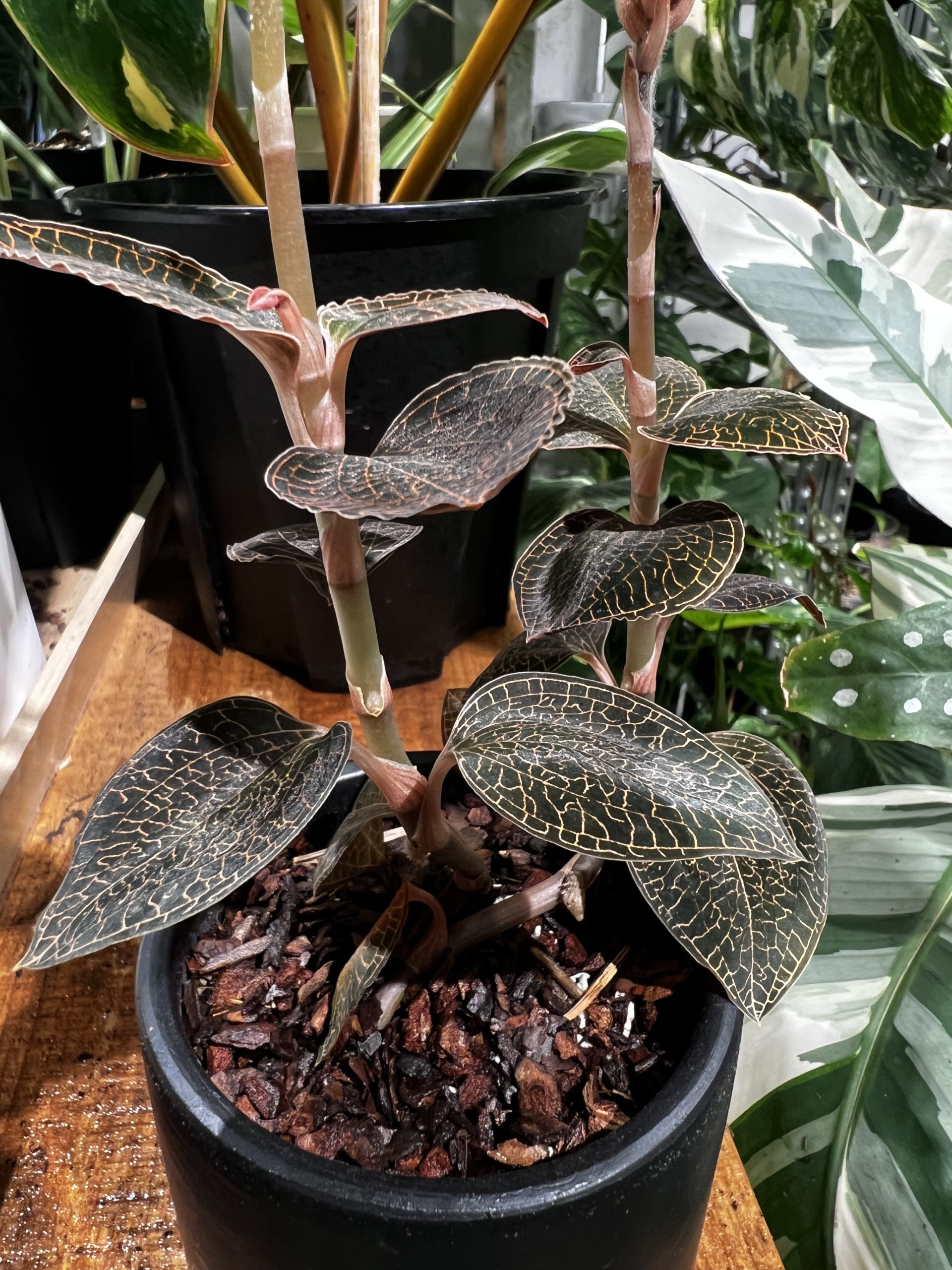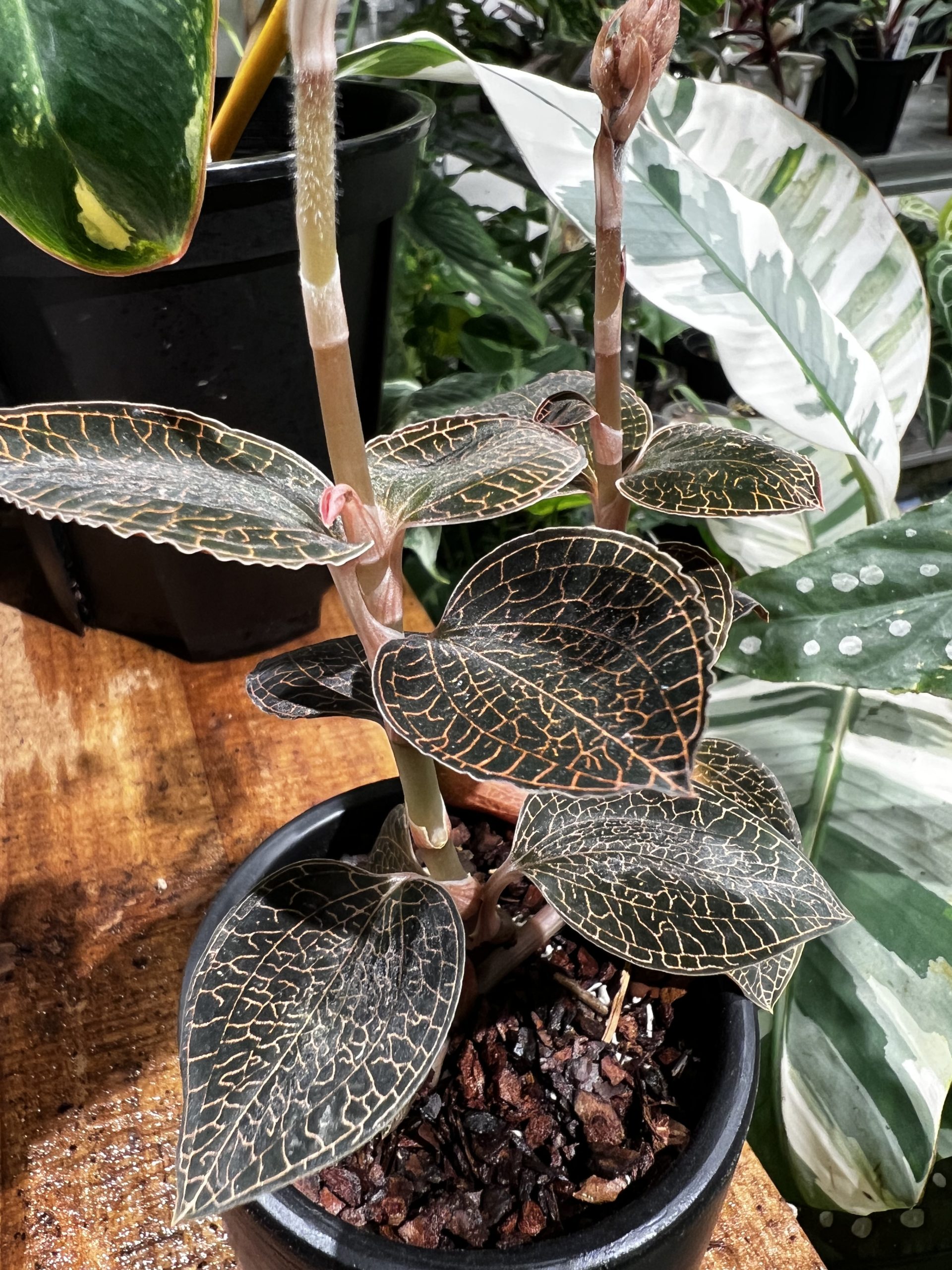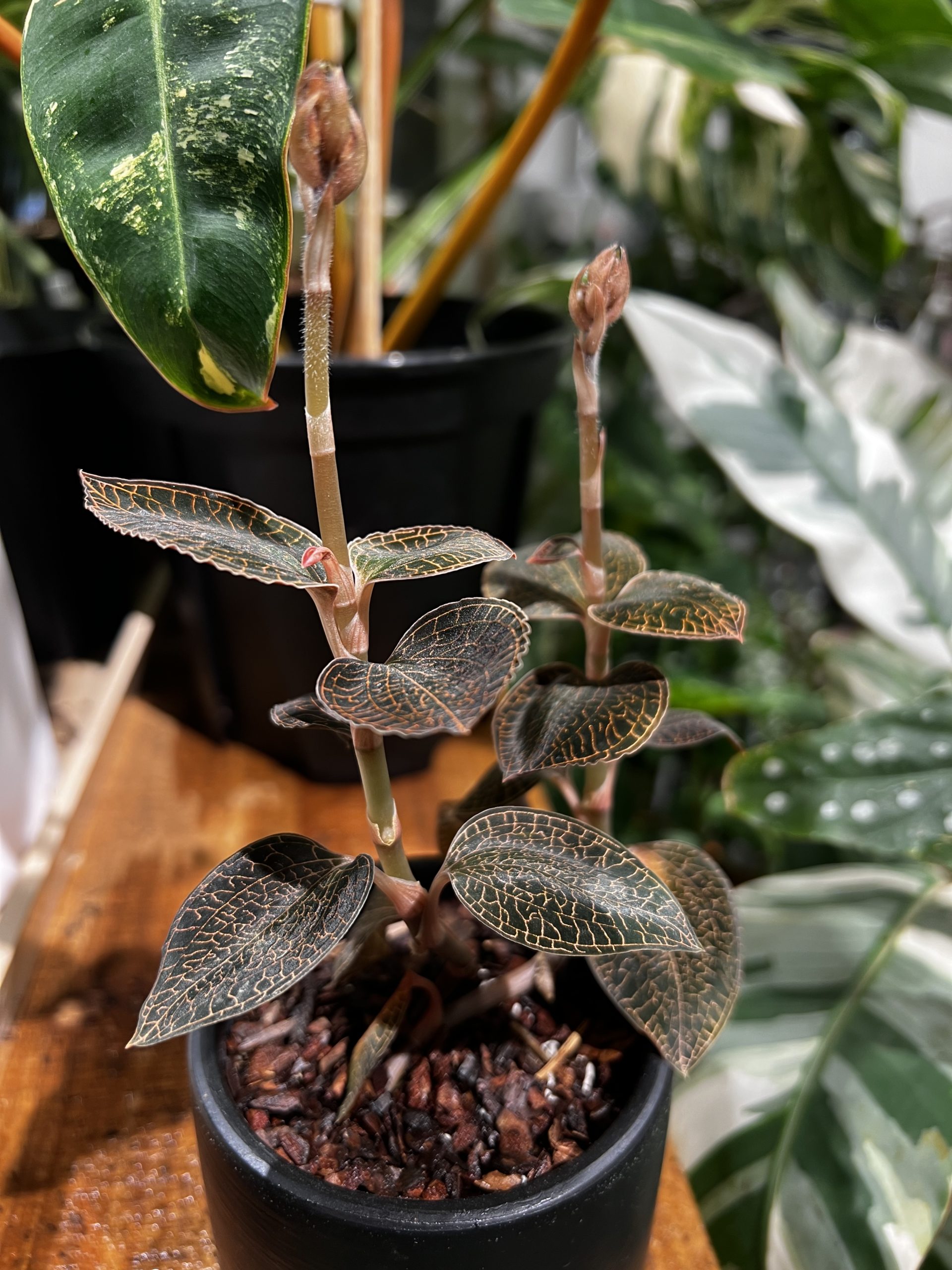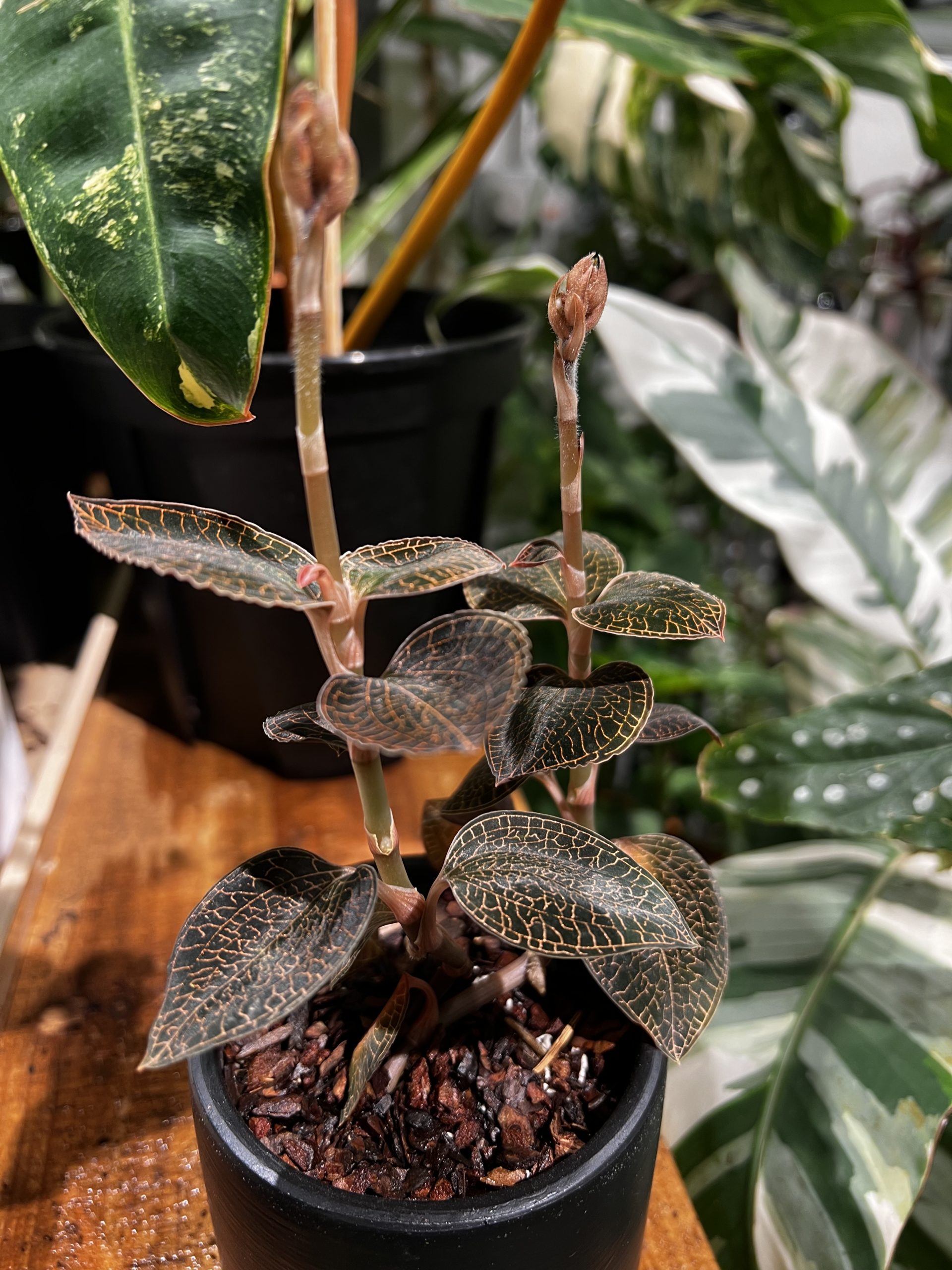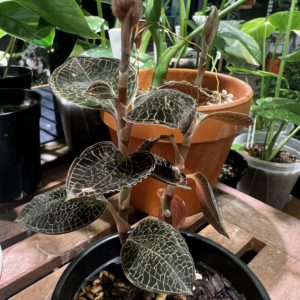Macodes are foliage plants with less ornamental flowers, so many people focus more on their foliage and even cut off the flowering stems.
Here are some tips for caring for your gemstone orchid potted plants:
- Potting soil: Gem orchids prefer soft, diffused light, so choose humus-rich soils. Moss, peat, perlite, or other breathable materials such as snake sawdust, pine scales, and volcanic stone can be used. A common soil mix is moss:perlite:volcanic rock = 5:2:3. Adding some crushed eggshells or bone meal to the bottom of the soil can provide the calcium needed for gemstone orchids.
- Light: Gemstone orchids like to scatter light and avoid sun exposure. Too much light can cause the leaves to get sunburned, but too much shade is also not good for growth. It is best to place the gemstone orchid on an east-facing windowsill or balcony, away from direct sunlight.
- Watering: Gemstone orchids need to be watered frequently, but don't let the soil become waterlogged or too wet. Keep the soil slightly moist but avoid overwatering. The frequency of watering can be increased in the summer and reduced in the winter. Avoid watering with cold water.
- Humidity: Gemstone orchids prefer high humidity but also need good ventilation. It is best to keep the ambient humidity above 75%以上,甚至85%. In a dry environment, a shallow pot filled with pebbles and water can be placed at the bottom of the pot to increase the humidity of the environment.
- Fertilization: Gemstone orchids do not have a high demand for fertilizer and can be fertilized moderately. Choose water-soluble liquid fertilizer, and the concentration is controlled at about 1/4 to 1/8 to avoid over-fertilization. Fertilization is applied every two weeks or so in spring, summer and autumn, and no fertilization is required in winter.
- Propagation: Gemstone orchids can be propagated using stem cuttings. Choose shoots with 3-4 growth nodes, keep the top 2-3 young leaves, and make a flat cut at the bottom. Place the cuttings in an environment where high humidity is maintained, and the temperature is maintained between 27-29 degrees. The top of the cuttings can be covered with a transparent plastic bag and placed in a ventilated and light-permeable place waiting for rooting and germination.
- Pest control: Gem orchids are less affected by pests and diseases, and the main problem is root rot caused by soil moisture. If brown spots or rot are found on the foliage, stop watering immediately and allow the soil to dry for a while. If pests and diseases occur, the foliage can be washed with appropriate insecticides or soapy water.

